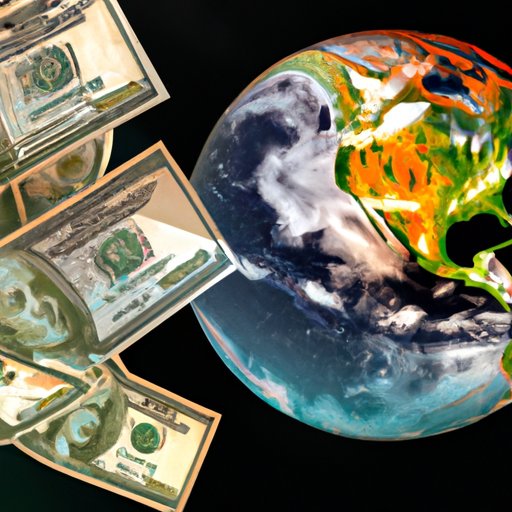
I. Introduction
Money is a universal language that speaks to the value we place on goods and services. However, understanding how much money exists on earth is a complex and ever-changing task. In this article, we aim to explore different aspects of global wealth and inequality, including who holds the most money, how countries compare in terms of wealth, and what factors contribute to wealth distribution. By the end of this article, readers should have a better understanding of the complexities of global wealth and how it affects different individuals and societies.
II. The Top 10 Richest People on Earth: A Closer Look at Their Wealth
The top 10 richest people on earth hold a combined net worth higher than many countries’ GDPs. These individuals have amassed their wealth through various means such as inheritance, entrepreneurship, or investment. Jeff Bezos, Elon Musk, and Bill Gates are among the wealthiest, with net worths ranging from $100 billion to $200 billion. The immense wealth of the top 10 can help shed light on the disparities that exist in terms of wealth distribution, but it’s important to note that their individual success doesn’t necessarily represent the experience of the average person.
III. Exploring the Net Worth of the World’s Countries
Understanding how different countries compare in terms of wealth can provide insight into larger global economic patterns. According to GDP and other economic indicators, the top wealthiest countries are the United States, China, Japan, Germany, and the United Kingdom. Factors contributing to these countries’ economic success include political stability, access to natural resources, and level of industrialization. However, it’s important to note that countries with higher GDPs don’t necessarily have lower wealth inequalities. For example, the United States has one of the highest levels of income inequality among developed countries.
IV. The Distribution of Wealth on Earth: What the Numbers Tell Us
Global income inequality is a significant issue that often falls along regional and racial lines. In 2019, the world’s 2,153 billionaires held more wealth than the 4.6 billion people who make up 60% of the planet’s population. Factors contributing to wealth inequality can include educational opportunities, access to capital, and social and cultural systems. It’s important to note that systemic inequalities contribute to the perpetuation of wealth disparities, and solutions require deeper structural changes.
V. Where Did All the Money Go? Understanding Global Debt and Deficits
Countries borrow money for various reasons, including public investment, military spending, or social welfare programs. However, high levels of debt and deficits can have negative consequences for countries and global markets. In 2020, the global debt reached $277 trillion, with the United States and Japan holding the highest levels of debt. Economic instability can arise when countries are unable to repay their debts, leading to issues such as inflation, recession, and default. It’s vital for countries to manage their budget and ensure that they don’t accumulate unsustainable debt levels.
VI. The Impact of Natural Resources on Global Wealth
The wealth of many countries depends significantly on the natural resources available to them. Countries such as Saudi Arabia, Venezuela, and Russia are among those with significant natural resources, including oil, gas, and minerals. However, relying on natural resources can expose countries to significant economic risks, including susceptibility to commodity prices and environmental risks associated with extraction. Efficient management of natural resources is essential to ensure sustainable economic growth and long-term prosperity.
VII. Conclusion
Understanding global wealth and inequality requires us to explore various aspects, including how the wealthiest people amassed their fortunes, how different countries compare in terms of wealth, and what factors contribute to wealth distribution. While the issue of global wealth and inequality is a complex one, understanding its complexity is essential in taking action to address systemic inequalities. We encourage readers to ask questions and continue exploring this topic. Only with persistent engagement can we begin to understand the complexity behind global wealth and take necessary actions to promote a more equitable and just world.





